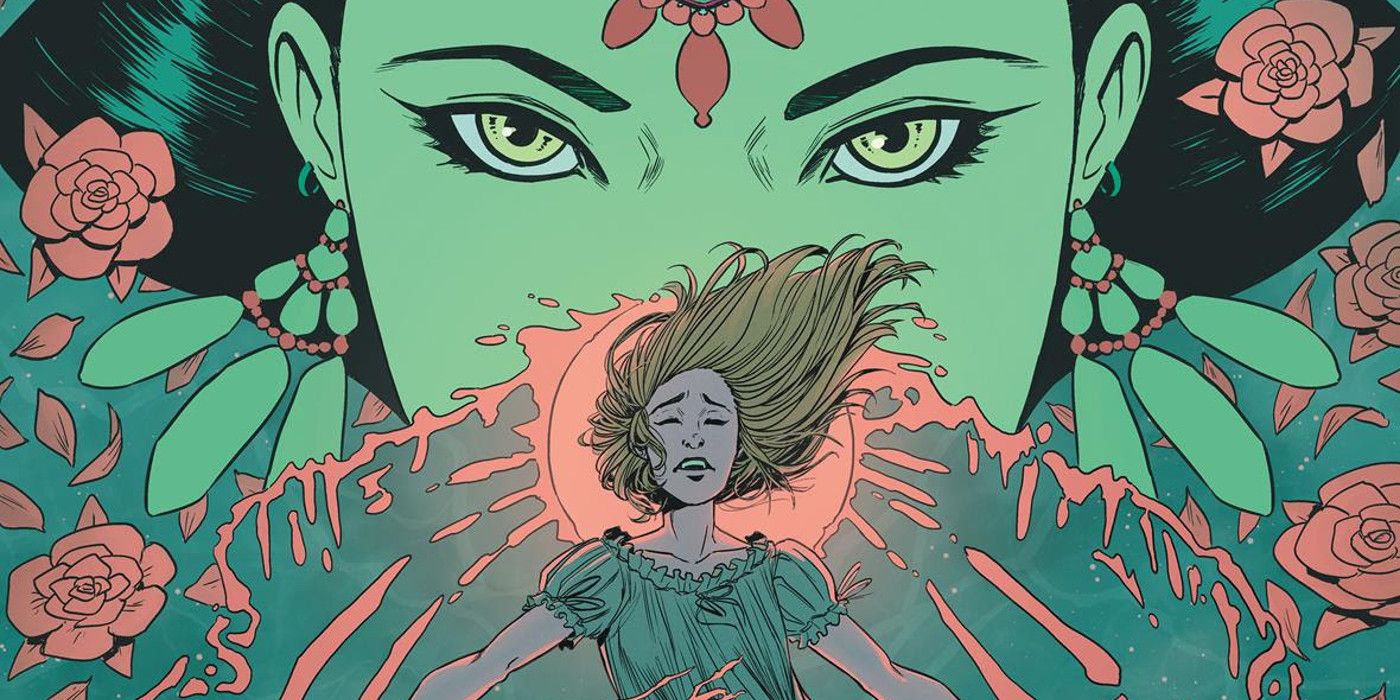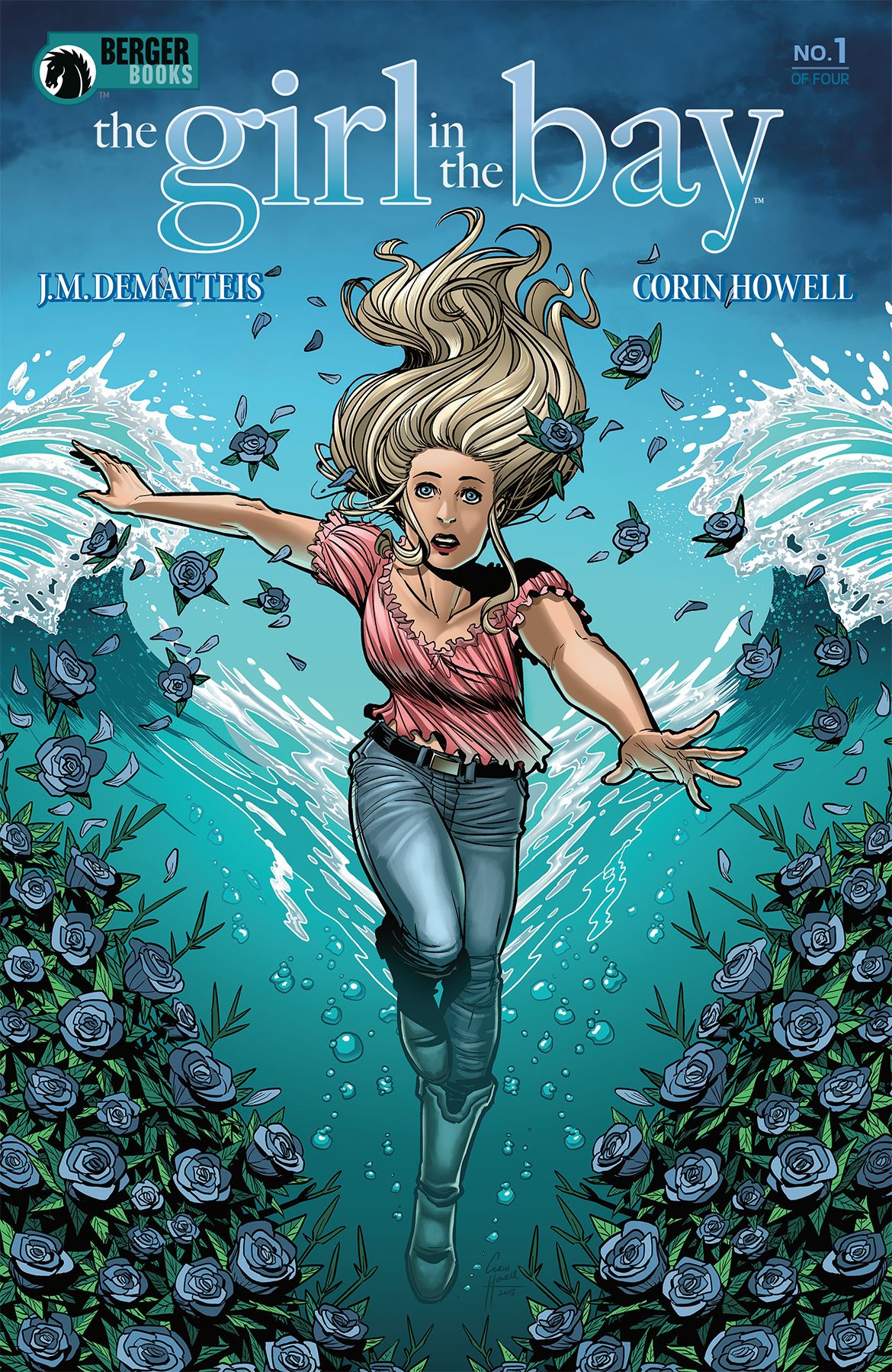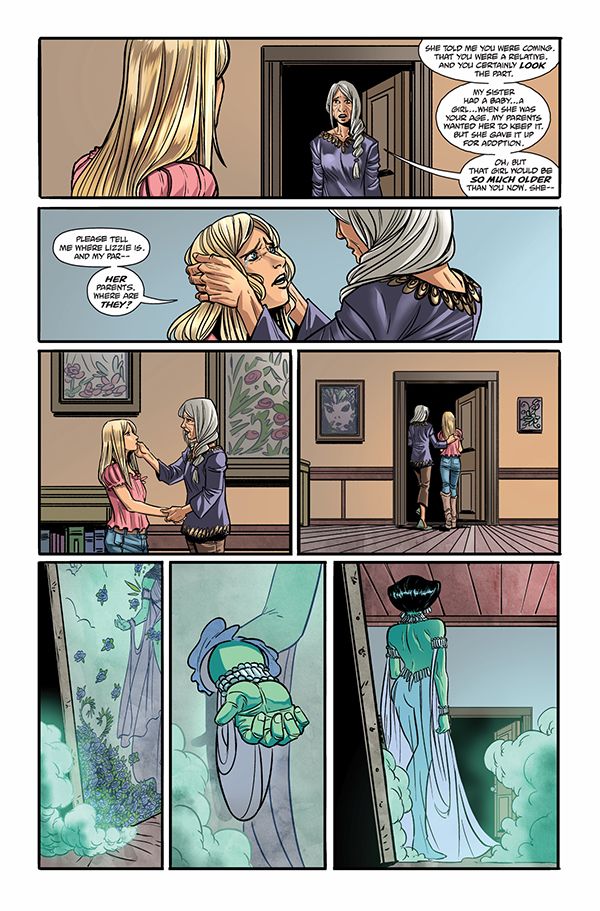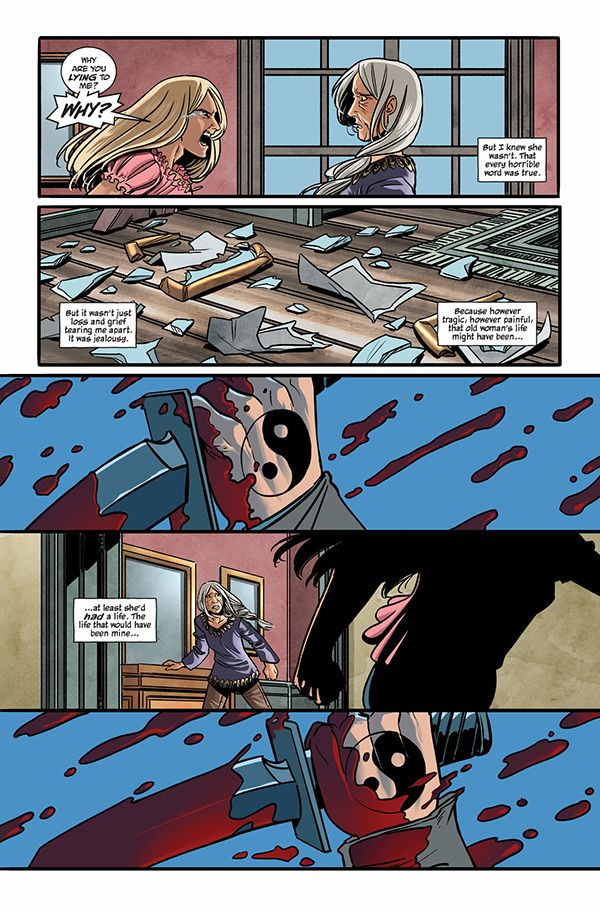Dark Horse's new graphic novel imprint, Berger Books, may draw its expectations from the sensibilities of eponymous editor Karen Berger, but with its next series, creators J.M. DeMatteis and Corin Howell are hoping to subvert expectations for crime and horror comics.
Arriving on Feb. 6, the limited series The Girl In The Bay tells the story of a murder from the perspective of its time-displaced victim. The story begins in 1969, when 17-year-old Kathy Sartori is attacked and left in Brooklyn's Sheepshead Bay only to be mysteriously revived 50 years later as if nothing happened to her. The teen is forced to investigate her own demise in a tale that mixes crime fiction, mysticism and horror.
Conceived by longtime comics vet DeMatteis and drawn with illustrative intensity by Howell, The Girl In The Bay seeks to turn the conventions of murder mysteries on their head. CBR spoke with the creative team in a rare moment when the pair were trading notes in person on how this bizarre thriller is shaping what Berger Books will be, and the publisher shared an exclusive first look inside Issue #1.
CBR: Your new book The Girl In the Bay takes its roots from crime fiction, but it branches out in a very different direction. Usually, when we see a tale open up with the death of a woman, she's the focal point of the investigation, but here she's also the lead character...
J.M. DeMatteis: Yeah. She is both the victim and the detective in this story. We set up our character immediately in the beginning. We don't need 24 pages of backstory first or whatever before the murder even happens. We get our inciting incident and the backstory immediately, and then we experience a jump in time. There's a lot of story to be told there.
Why is that a story that you particularly wanted to tell in the here and now?
DeMatteis: I tend to write very intuitively. Stores come to me like movies. I'll wake up in the morning and I'll literally have a movie running in my head where I go, "What's that? Where is this going next?" The hard part is getting to the computer and putting that movie down. The original idea for this story kind of came as a download. I was away on vacation and all of the sudden this story started coming to me, and I had to run back to my cabin to get it down and saved. Very often I follow the story and then discover the meaning in the story -- either the personal meaning to me or the meaning to the audience -- after the fact. And I'm fine with that.
NEXT PAGE: The Girl in the Bay Will Keep You Guessing
Corin, what about the concept connected with you as a reader when you got the scripts?
Corin Howell: This is mystery and thriller and horror. It's something where you're following this character after she's been basically murdered and thrown into the water. You have to ask, "What the hell just happened?" and you grow attached to her. Sometimes you start working on a script, and things really drag or you're not having any fun with them. With what [J.M.] has given me, I read it in 30 minutes and had to know what happens next. I'm very attached to it now.
J.M., it's well known to your fans that you've worked with Karen Berger before in the early days of Vertigo, and I wonder if you could compare the experience of making a book with her now to then -- not in terms of the creative process, but in terms of how difficult it is to launch a non-superhero monthly comic today as opposed to the '90s when these kinds of projects were more rare?
DeMatteis: Well, I think there's so much more of everything in the market now. Vertigo was a very unique thing at a very unique time, and people responded not just to the stories but to the brand. And I think that the fact that this is Berger Books will be a continuation of that because Vertigo was Karen. It just was. I think people know there's a certain sensibility to books edited by Karen. There might be a variety of storytelling styles, but there's a consistent sensibility. So, I think that will draw people. And I think this is a pretty unique story too.
Corin, you've drawn a lot of different projects already, but you're still fairly early in your career. What was your reaction to being asked to contribute to this line?
Corin Howell: Basically, Karen called and said, "I have a story for you. Are you interested in doing a doppelganger story?" I was like, "Tell me more." [Laughs] I love the weird and the creepy. I've been working on licensed books for so long that I never had the chance to do things that I'm actually interested in. So, this is a great opportunity, and I'm so excited to be working on this book. I'm having the chance to work in a darker style -- the style I enjoy the most.
A lot of the people that know my earlier work might know the Bat-Mite stuff or The Mighty Zodiac or some of the Transformers stuff when I first started out. A lot of that was cartoony, but that wasn't what I was really game for. Some of that stuff was my fandom when I was young, and I grew up loving it. But really and truly, finding myself and finding my style has come to a head -- especially while working on this book. I really have more time to do what I've always wanted, which is more detail and more expression -- more of the dark, weird and emotional states that characters can get into. I really don't get to do that with licensed characters, at least for the titles that I worked on. Everything is done real quick and has to be approved by a studio most of the time. Working with this came with very little notes.
DeMatteis: She really hit it every step of the way. We've had to refine little things because the beginning part of the story is set in a very specific time and a very specific place. And that can be difficult visually to capture, but she really gets it.
NEXT PAGE: The Girl in the Bay is Packed with Story and Character
This is a project that has its feet in two worlds. Obviously, the Berger Books line is anticipated to have legs in the graphic novel market, but you're still publishing this as a traditional monthly comic. Does it make a huge difference whether you're serializing it 25 or so pages at a time?
DeMatteis: You always want more. You want more room. You want more issues. You go in and say, "Could this issue maybe be 30 pages instead of 24?" But it doesn't work that way. And every format has it's limitations. I do a lot of TV writing, and there are limitations to that form and how much time you have. You learn to adapt your story to the form you're working in, and it's the same thing here. Would I have loved two more issues? Absolutely. But we've got a limited number. And, honestly, I'm not a fan of the lazily-paced story. I like to pack my series with story and character, and in a way, when you're limited in pages, you really have to do that.
How has the project evolved over the collaboration? As often it happens, it seems you've barely been able to meet in person to work on this.
DeMatteis: It's sort of a metaphor for our own society. We're all lost sometimes in the email world that we lose that connection. Just being able to meet and sign at a convention together really adds to the chemistry of the collaboration. Every writer and artist team should be forced to sit down in a room and have a conversation. It's just not the same as when you're working over email. You can get a lot done, but the human connection is the place where the chemistry can expand. I'm glad we met so that we can fold that back into the series.
Howell: Even now, we'll do these interviews and throw something out there, and then after it's done he'll go, "Oh, let's use that in the story!" [Laughter] We're so stuck in technology, we kind of forget that people are people.
DeMatteis: There was a time my editor would call me on the telephone every day when I was working on a book. Now months will go by and we'll never talk about things.
Dark Horse and Berger Books deliver The Girl In The Bay on Feb. 6.




